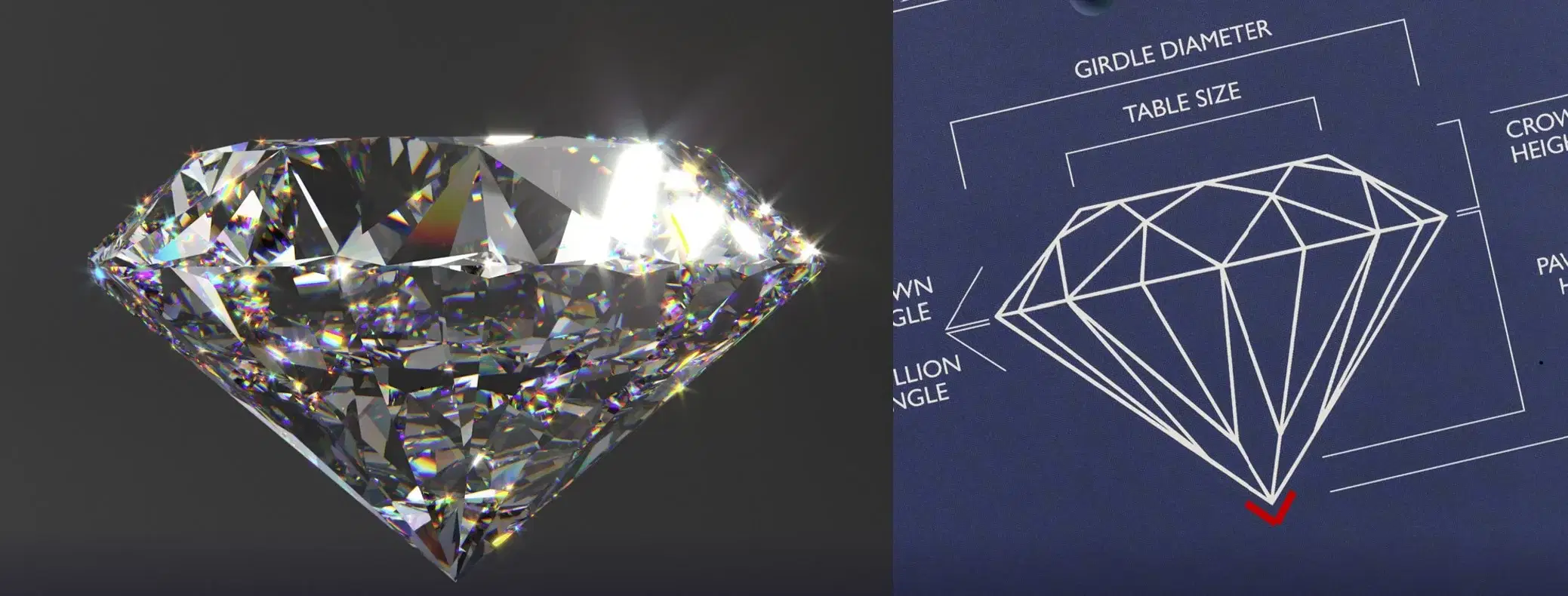Culet size impacts the cut of a diamond to a certain extent. It is also an important aspect when GIA grades diamonds. None or a small culet size that has no negative impact on a diamond’s appearance is the best choice. All that matters is the beauty/appearance of a diamond. If a culet is large or very large, there may be light passing through it that will reduce the brilliance of a diamond, affecting its beauty and market value.
If a diamond has a large size culet, light may pass through it straight through the crown and the facet without producing any sparkle creating a dead space inside the diamond. This dead area may reduce the significance of the diamond. Therefore, ideally, a diamond should not have a culet. These days diamond cutters intentionally create a small culet while cutting a diamond to minimize the chances of a diamond getting chipped.
Often the culet won’t be visible to the naked eye as long as it’s not gross, which is rare. During the processing of a diamond, it is polished precisely and neatly, just like a facet. A round brilliant cut typically has 57 facets, and the 58th facet is often considered the culet of that diamond. A culet may be examined with an x10 loupe, but it would be hard for an untrained eye to deduct or inspect a small culet.
In conclusion, it is recommended that avoiding a diamond with a very large culet size would be a smart choice, and sticking to ones with none to medium culets would be your best bet.
